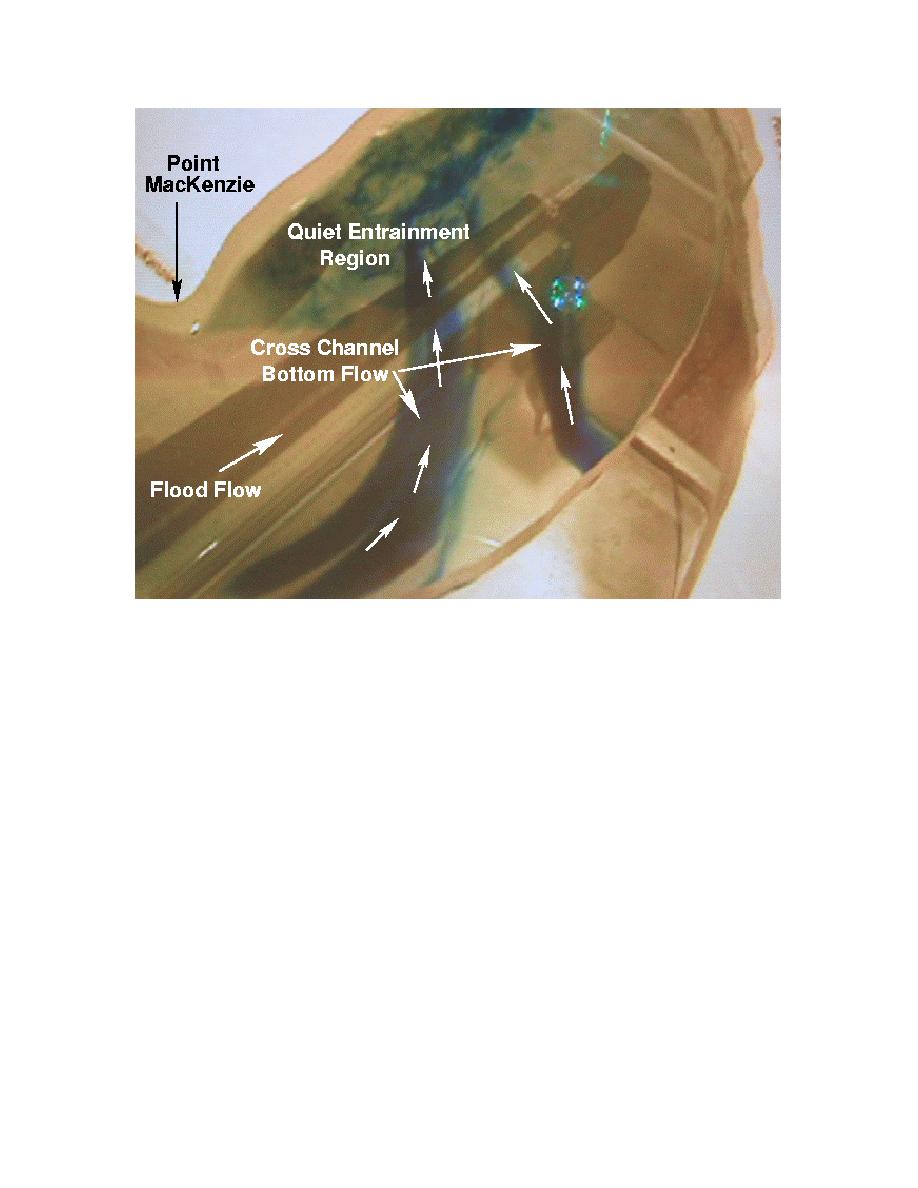
ERDC/CHL CHETN-IV-55
March 2003
Figure 5. Cross-channel bottom flow at Cook Inlet, AK
Over the 3-day testing period for the idealized models, valuable insight into the complex tidal flow
was gathered which led to new understanding of the problems facing the Alaska District. Evidence
of strong flow separation and existence of 3-D flow circulation patterns helped the District engineers
evaluate various modeling approaches that might be employed in seeking a problem solution. Total
cost for the idealized flow table modeling effort was estimated to be less than ,000 plus travel
costs. Benefits derived from the study far outweighed the costs because the overall study then
became focused on root causes of the shoaling problem and appropriate engineering methodologies
that could be pursued.
Three-Dimensional Flow Table Model. The success of the idealized Cook Inlet models
prompted the Alaska District engineers to fund an additional flow table model of Cook Inlet
featuring actual bathymetry of the study area. The primary purpose of the 3-D model was to confirm
that flow patterns and the harbor sedimentation mechanism discovered in the idealized model were
not unduly influenced by the terraced bathymetry of the idealized models. A secondary objective
was to investigate impacts related to various dredge release sites to optimize dredging operations.
8



 Previous Page
Previous Page
